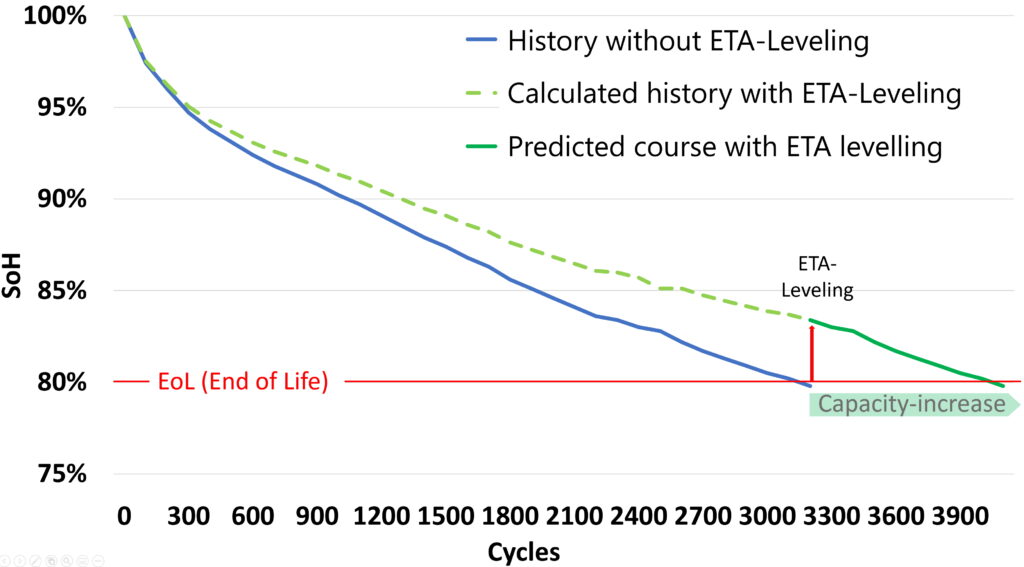In conventional battery management systems (BMS), every load cycle causes a very small cell drift that can neither be detected nor measured until much later. But what starts small will eventually have dramatic consequences: low useable capacity and fewer remaining load cycles. ETA-Leveling will prevent this.
A use case from real life illustrates the benefits of this algorithm that can be integrated into existing hardware without any modifications. The BENNING CMS Technology GmbH Battery Leveling Laboratory tested a used e-mobility traction battery with 80 percent useable capacity – a state that meant it had reached its end of life for use in electric vehicles (EV). The Laboratory team reanimated the battery (i.e. leveled it), lending it around 900 more load cycles before it will drop back to 80 percent.
Saying goodbye to cell drift with ETA-Leveling
BMS that use ETA-Leveling from the very start prevent the premature ageing of individual cells in the first place, thus heading off cell drift and the resulting loss of useable capacity. In EV batteries, useable capacity equals range – and cell drift equals loss of range. While we are dealing with losses of below 10 percent (3.5 percent in the tested battery), these seemingly small figures cannot hide the fact that consequences can be severe. This is especially true for e-mobility, where every little bit of range matters. “Shorter ranges and fewer load cycles are caused by inadequate BMS,” explains Frederik Fuchs, Managing Director of Benning CMS Technology. “Our ETA-Leveling technology leads to more usable energy under the same conditions.” ETA-Leveling is available for any type of battery block and can be implemented into BMS following the purchase of a licence.
Images:
(Please note, this is screen resolution only. You can request print resolution quality here.)

Please do not hesitate to contact us if you have any questions. If you had the opportunity to cover this information, we would much appreciate you sending us a link and/or a hard copy. If you are interested in an exclusive specialist article on the topic or a specific aspect of it, please reach out to us.







